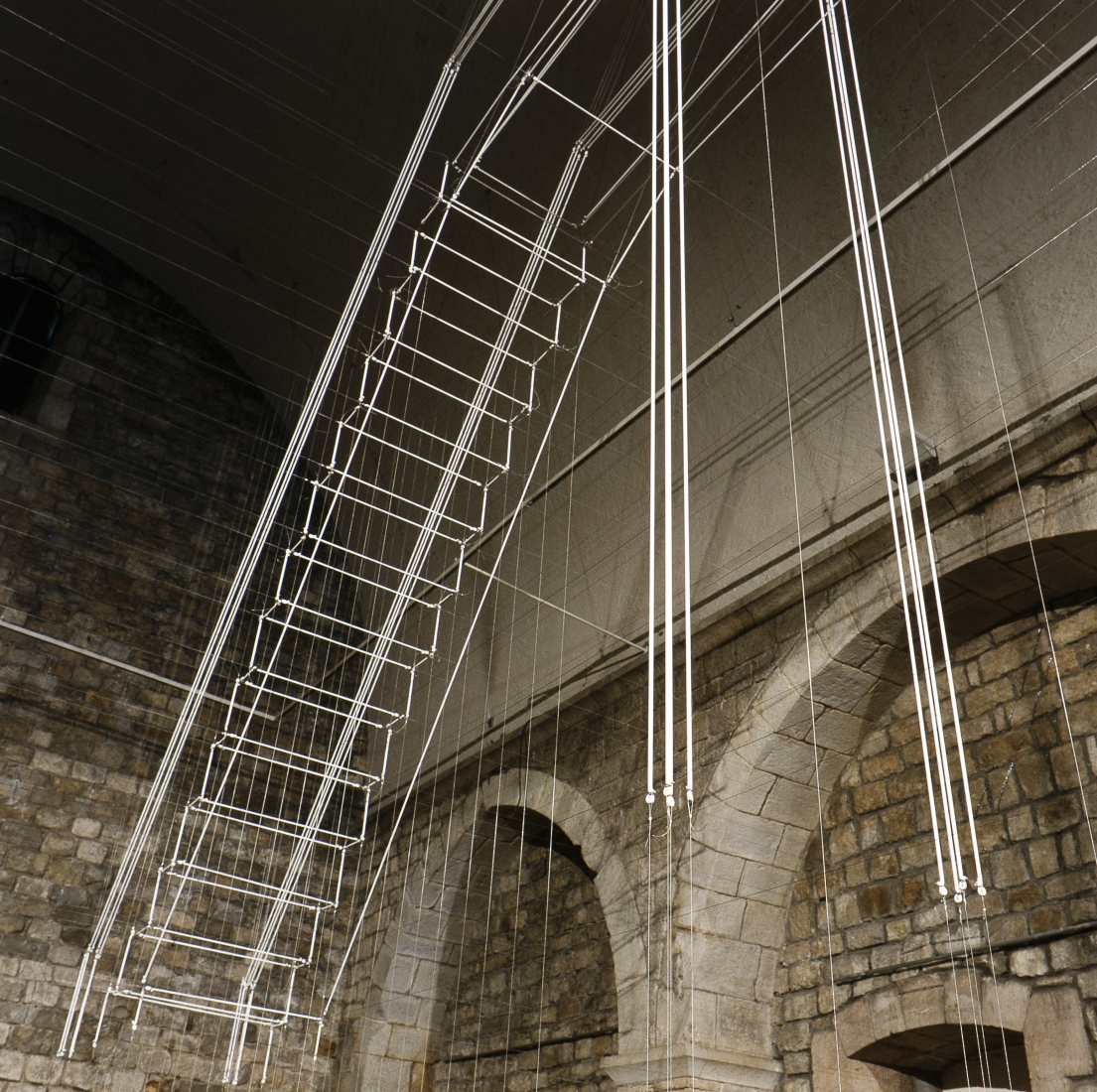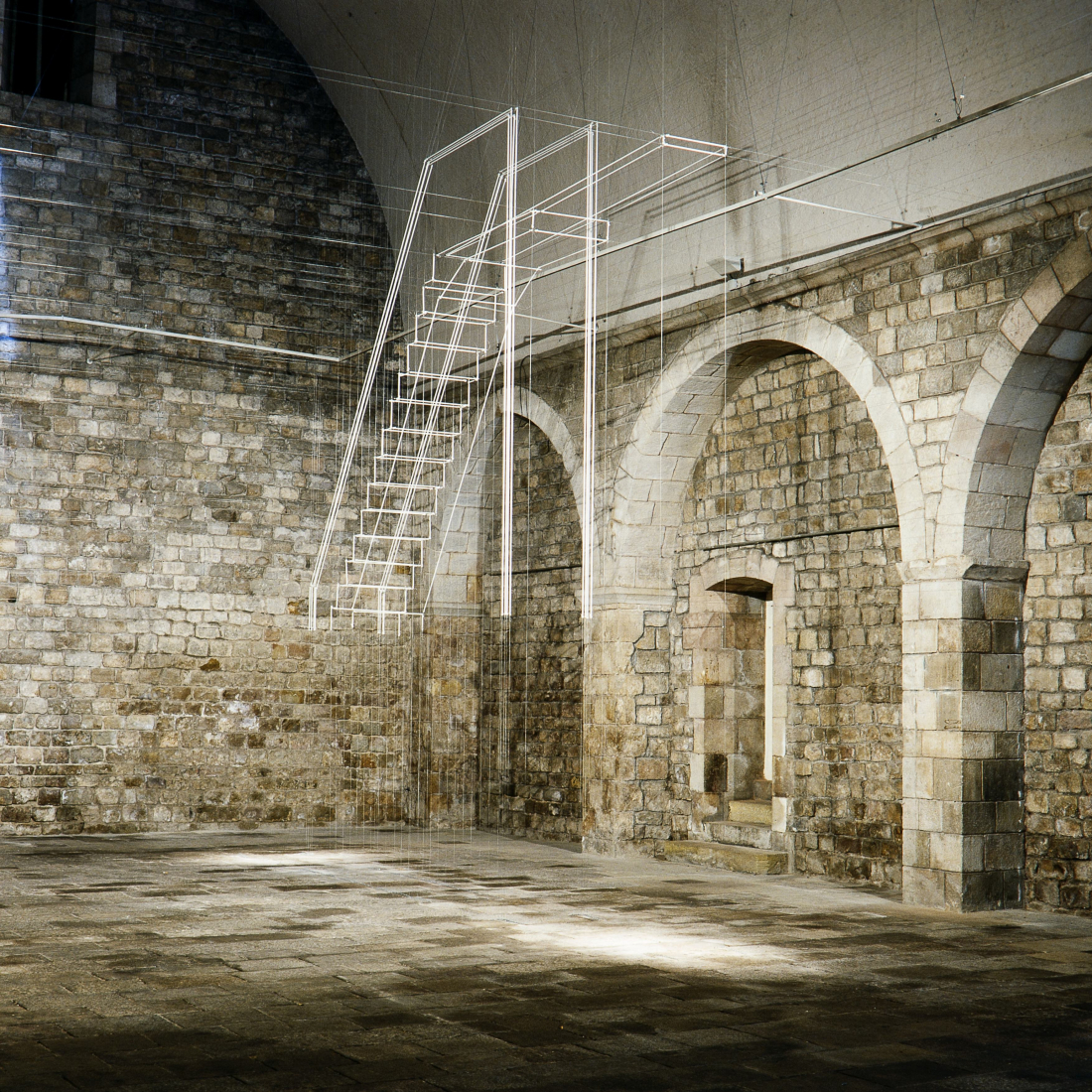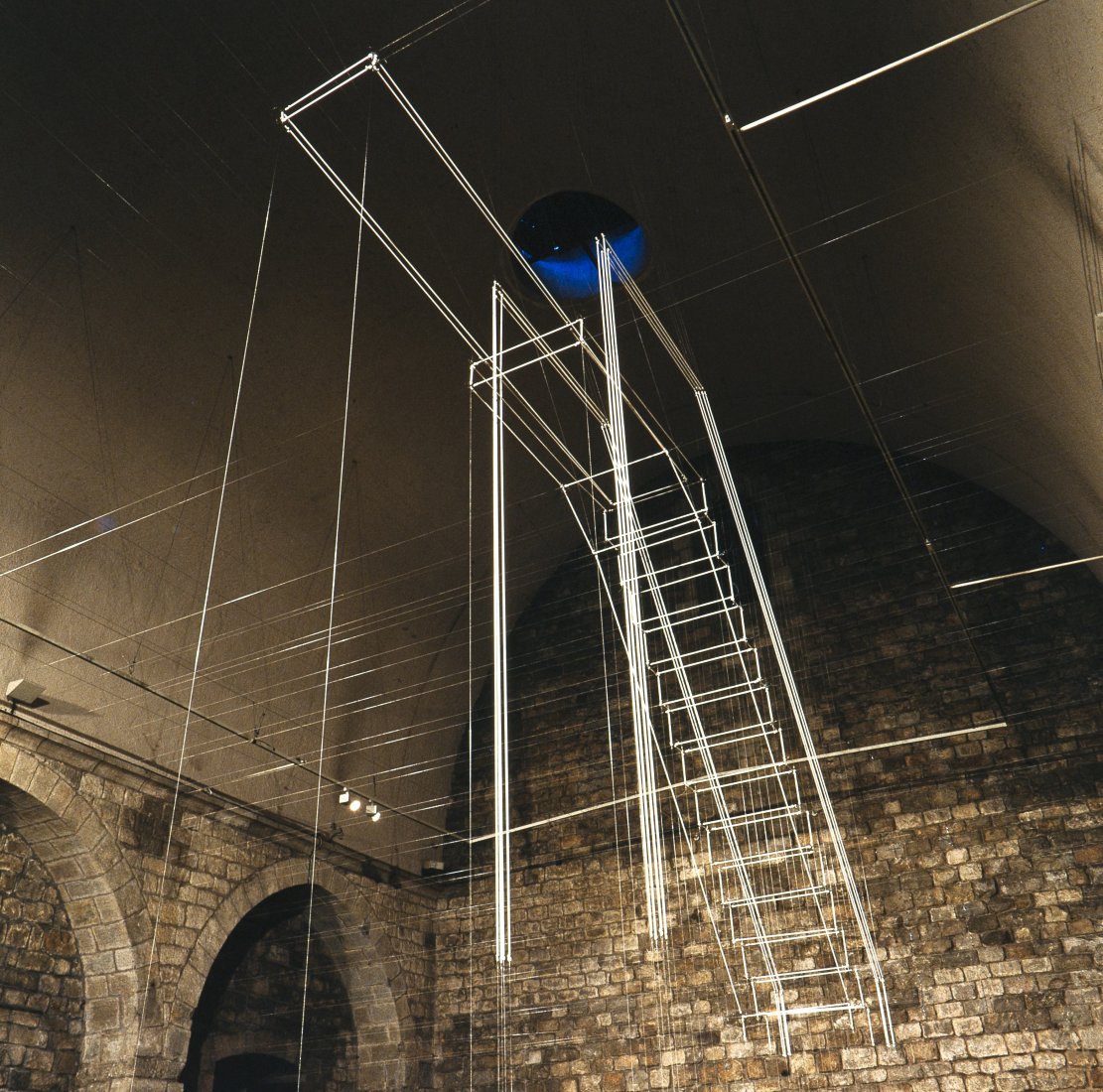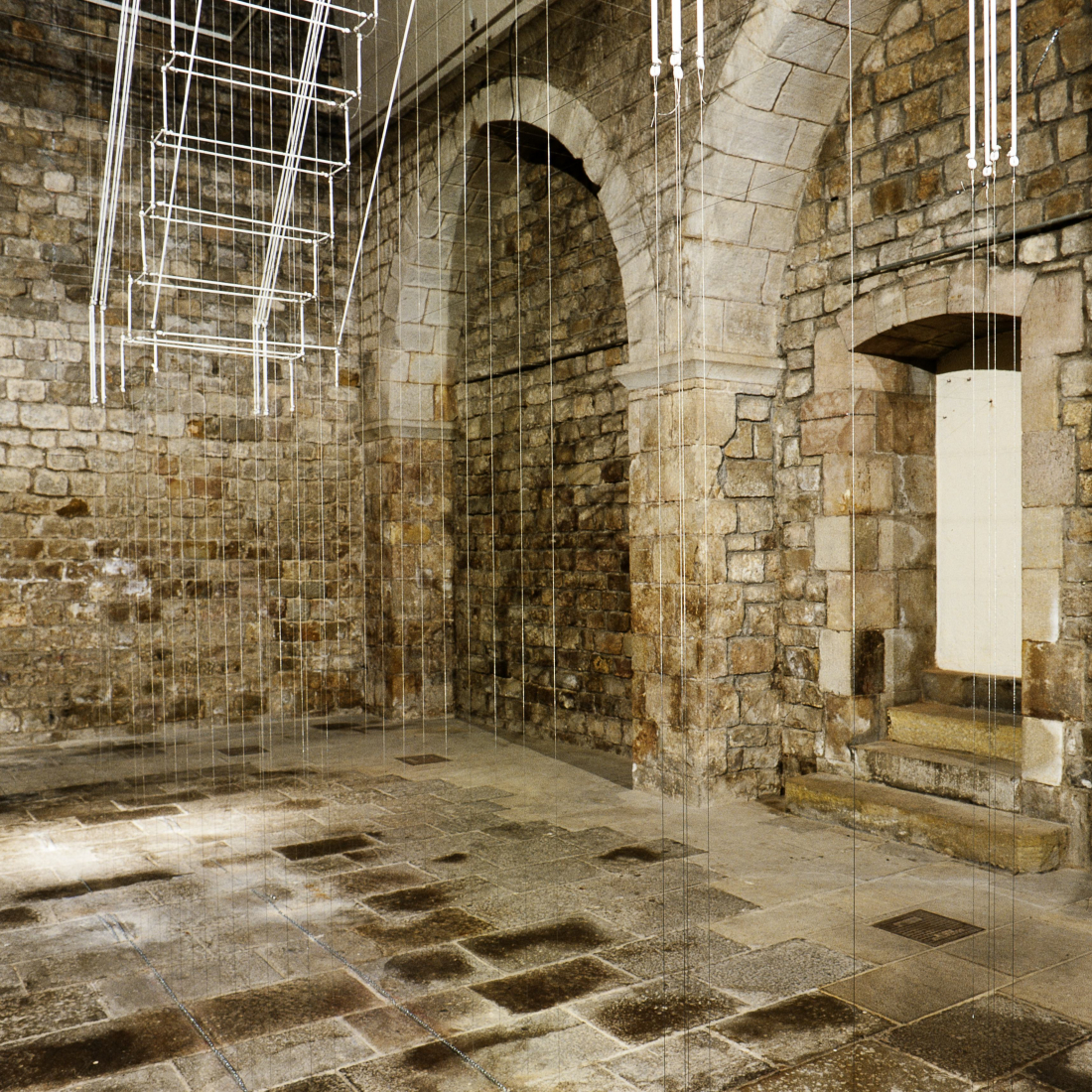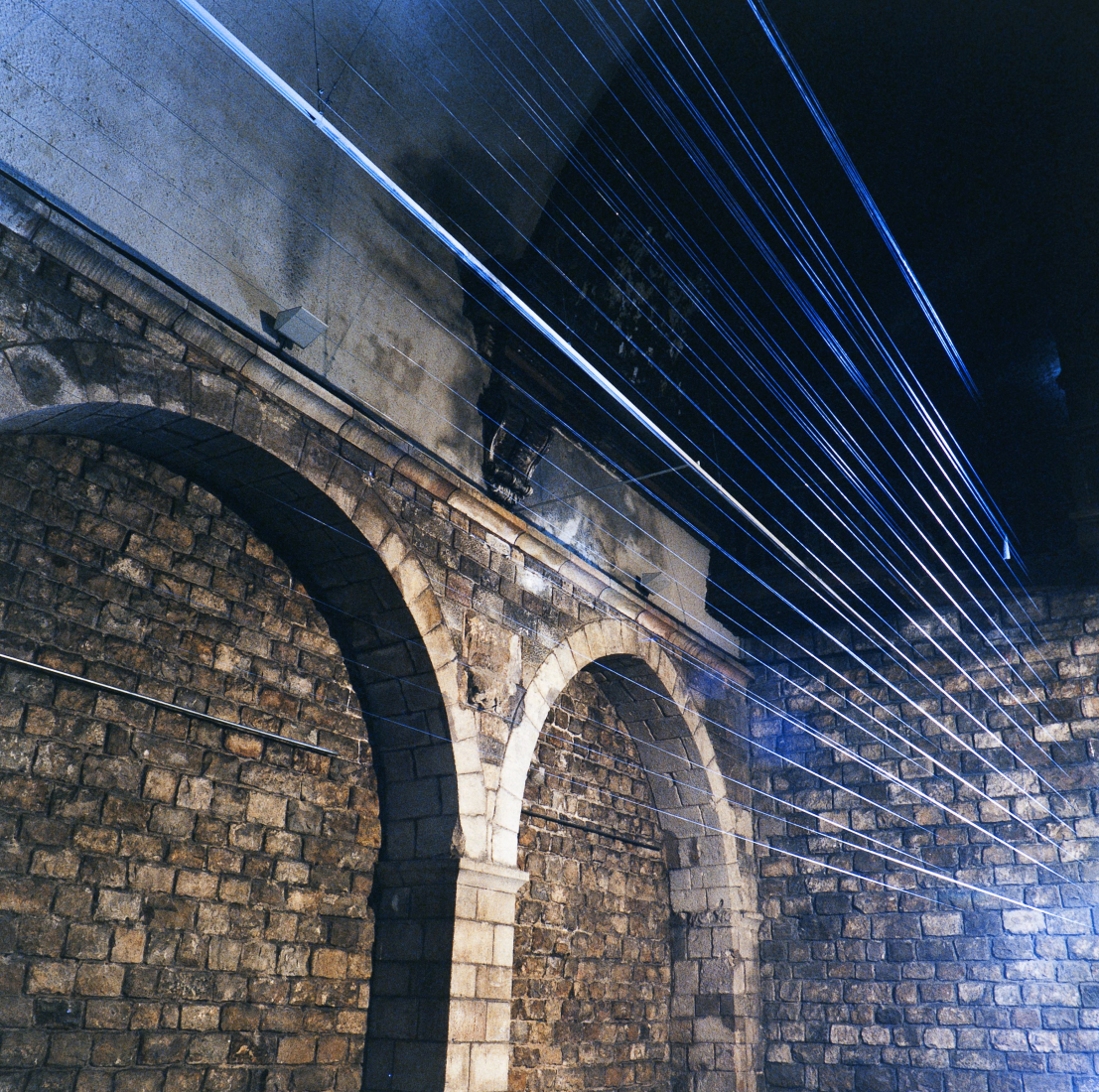Dos piezas juntas
In the proposal for La Capella's Sala Central, Luis Bisbe drew the three-dimensional image of a large trampoline by means of a dense framework of struts that crossed the whole space. The installation sets the representation as an apparition in the space, by means of the data which, in their abstraction, define it dynamically. The perception of the object thus drawn becomes illusory, as though taken from an imaginary transparency. The trampoline waits for the jumper at the top of a long ladder that places the translucent object at two meters from the ground, placing the public at the height of a hypothetical, imaginary swimmer who floats on the surface of an imaginary swimming pool. La Capella transmutes itself thus into a huge water container. The subliminal image of the large swimming-pool occupying, substituting, the space of La Capella makes the trampoline (with its ladder waiting for someone to climb to it and jump off) acquire an open and evocative meaning on transforming the space of the ceremony into a deep, penetrable, aquatic and transparent place. The codes that Bisbe uses to represent allude more to post-minimalist strategies or those of distancing oneself from the subjectivity that objects release. He limits himself to naming them. But in this distancing of himself, in this longing for objectivity, of semantic neutrality, he creates a vacuum that allows the object to put into play by its mere presence, all the evocative load that the linguistic mechanics of the change of context relentlessly develop. Thus, Bisbe's trampoline appears in space as a metonymy. Or like a word that in its echo transformed in spite of itself. Although the trampoline is drawn to a strict scale of 1: 1 at the end of the room, the installation occupies the whole area of La Capella. The tension lines that the artists of the object extend upon the space materialise in the fine metal cables that cross the length and breadth of the room, in an all but invisible occupation. Bisbe's project, Dos piezas juntas (Two pieces together), had the counterpoint of the projection of the photo of a fragment of one of the walls of the same space he had already photographed. The piece abounds, this time ironically, on the illusion or the impossibility of representation, creating an ambiguity between that which is represented and its representation. Or a loop between what is represented and its representation. Bisbe returns to the landscape of the wall the stolen look, in an almost ecological restoration of the image. From the representational point of view, the piece converses with the trampoline with the same will to put things into objective terms and distance themselves, this time questioning us on the substantial double doubt in art, the quality of the real and the utopia of mimesis.
Luisa Ortínez



